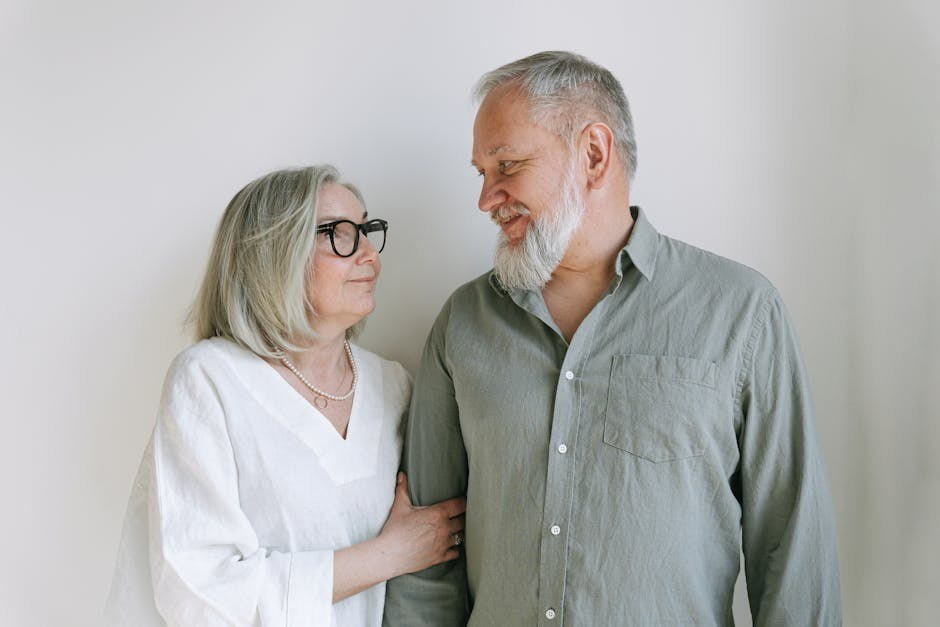Ask ten people to describe what it means to love someone, and you’ll hear ten different stories – yet the core feeling is strangely recognizable across them all. We use the same small word for coffee, pets, parents, and partners, but the experience shifts depending on context. To love someone in a romantic sense is not merely fondness or habit; it is an ongoing practice that blends emotion with intention, desire with respect, and closeness with freedom. This article reframes familiar ideas, clarifies common confusions, and sketches out how it tends to feel when you truly love someone in a way that nurtures both people.
The broad landscape of love
Human attachment comes in many shapes – familial bonds, deep platonic friendship, romantic partnership, and even the attachment we have to places or routines. Within that landscape, to love someone romantically is to hold a steady, caring regard for their well-being while allowing them to remain fully themselves. It includes tenderness and attraction, but it is not limited to either. You might delight in their stories, show up when it matters, and make space for their dreams. Crucially, when you love someone, your choices start to factor in their needs, not as a duty but as a willing recalibration of your own rhythms.
That recalibration doesn’t erase individuality – it asks for balance. You can love someone deeply and still keep your own center. In healthy partnerships the “we” grows around two intact “I”s. You make room for each other instead of squeezing one person into the mold of the other. When you love someone, you notice their quirks, accept their edges, and respond to their humanity rather than an idealized version of them. The result is not constant bliss; it’s a durable connection that can withstand boredom, stress, and the occasional misunderstanding.

What love actually is
At its heart, love is a sustained, caring attention. When you love someone, affection is accompanied by action – the kind that protects, repairs, and celebrates. The feeling can be intense, but intensity alone is not proof; it is the pattern over time that tells the truer story. Love widens your perspective, invites you to listen, and nudges you away from self-absorption. To love someone is to see their full picture – strengths, flaws, history, hopes – and decide, again and again, to treat that picture with gentleness and respect.
Being in love often arrives with a rush – the spark, the thrill, the sense that ordinary days are brighter. Yet enduring love grows past that first wave. When you love someone beyond infatuation, interest transforms into commitment, and butterflies make room for steadiness. You still feel desire, but you also know how to show up after a bad day, how to apologize without keeping score, and how to hold boundaries without turning cold. Put simply, to love someone is to care in a way that is both warm and wise.
Common mix-ups: what love is not
Because love is powerful, it’s easy to mislabel other dynamics as love – or to use love as a cover for behavior that erodes connection. Clearing up these mix-ups protects the bond you’re trying to build when you love someone.

Love is not ownership. A partner is not a possession. Titles can help define commitment, but they do not create entitlement. When you love someone, you honor their autonomy – their time, friendships, and choices – instead of treating the relationship like a private claim.
Love is not control. “If you loved me, you would…” is a lever, not a loving request. To love someone is to invite, not coerce. It means discussing needs, negotiating differences, and accepting “no” without retaliation.
Love is not complete self-erasure. Sacrifice can be meaningful, but a pattern of disappearing yourself is not devotion. When you love someone, you also care for your own health, friendships, and purpose – because a relationship thrives when both people do.

Love is not the same as sex. Intimacy can deepen connection, but consent and care define its health. You can love someone without rushing a physical timeline, and pressure dressed up as romance is still pressure.
Love is not power over. Influence exists in every bond, yet love is not a scoreboard. When you love someone, you do not “win” by making them smaller; you both win when decisions are collaborative and dignity remains intact.
Love is not blindness. Admiration can soften your view, but it should not erase red flags. To love someone is to see clearly – to hold compassion and boundaries together, and to refuse harm even when your heart is attached.
How it often feels when you love someone
Experiences vary, but many people recognize the following themes. Think of them as signposts rather than strict criteria – helpful markers when you’re trying to understand what it means to love someone.
You genuinely care about their well-being. You notice how they’re sleeping, whether they ate, and what’s weighing on them. When you love someone, their ordinary comfort matters – not because you’re policing them, but because their ease makes your day brighter too.
You make room for compromise. Two lives rarely line up perfectly. When you love someone, you look for middle ground, trading preferences without tallying losses. You both adjust, and the adjustments feel like teamwork rather than defeat.
You cultivate trust. Trust doesn’t appear on day one; it accumulates. You keep promises, tell the truth, and own mistakes. To love someone is to build a climate in which doubt has fewer places to hide.
You want to share your world. Stories pour out – the tiny victories, the traffic annoyances, the childhood memories you’ve never said aloud. When you love someone, communication becomes both bridge and balm, carrying warmth across the day.
Their happiness lifts you. You celebrate their good news without resentment. When you love someone, their wins feel like a shared sunrise – you’re not sidelined by their success; you’re invited into it.
You practice forgiveness wisely. Everyday frictions happen. When you love someone, you prefer repair over replay – you address the problem, learn from it, and move forward. That said, forgiveness is not limitless; care cannot coexist with ongoing harm.
You learn from each other. Love is a classroom without grades, full of new perspectives. To love someone is to be curious about their take on the world – politics, art, recipes, coping strategies – and to let those insights shape you.
You invest time and attention. Presence is love’s currency. You show up for the big milestones and the small rituals, whether that’s a video call after work or coffee at dawn. When you love someone, you treat time together as essential, not optional.
You laugh together. Humor loosens knots. Shared jokes and silly moments make hard weeks more bearable. When you love someone, laughter becomes a kind of glue – light, flexible, and surprisingly strong.
You feel comfortable being fully yourself. The mask slips off. You can snort-laugh, wear the old sweatshirt, or admit you’re afraid. When you love someone, that acceptance is mutual – you both get to exhale.
You notice you’re better with them. Not because they “fix” you, but because the relationship encourages growth. To love someone is to support and be supported – nudged toward kinder habits, steadier moods, clearer goals.
You want to spend time – not all of it, but plenty. Proximity feels nourishing. When you love someone, you plan, you prioritize, and you enjoy simply being nearby, even when schedules are tight.
You miss them thoughtfully. Distance doesn’t derail you, but you do think about them during lunch or while hearing a song. To love someone is to hold them in mind in a way that feels tender rather than anxious.
You’re content doing nothing together. A quiet evening on the couch can feel complete. When you love someone, companionship is enough – no grand itinerary needed, just shared presence and easy silence.
You also like them. Beyond romance, you enjoy their company. When you love someone, you respect their character and genuinely find them interesting – the sort of person you’d choose as a friend even without the spark.
Why balance matters
Healthy love keeps two truths in play: closeness and independence. When you love someone, you draw near, but you do not cancel your separate selves. You protect the relationship by protecting the people inside it. That means listening without trying to fix every feeling, setting limits without punishing, and reaching for repair when conflict appears. It also means paying attention to your own signals – hunger, stress, joy – so you don’t expect a partner to meet needs you’ve never named.
Boundaries can sound unromantic, but they are the scaffolding that keeps warmth from collapsing under expectation. If you love someone, you’ll still say “I need a night to rest,” and you’ll hear the same from them without panic. You can talk about money, sex, family, and future plans with honesty – not perfect ease, but enough steadiness to stay in the conversation. Even the famous phrase I love you grows more meaningful when your daily behavior backs it up.
Repair, resilience, and the long view
No relationship avoids friction. What matters is how you navigate it. When you love someone, you resist the urge to turn every disagreement into a referendum on the relationship. You slow down, name the specific issue, and look for shared ground. You apologize without “but,” and you accept apologies without gloating. Over time, these small repairs weave trust. They remind you that love isn’t proven by never stumbling – it’s proven by how you reach for each other after you do.
Resilience also asks you to notice patterns. If conflicts repeat with the same sharp edges, you step back and examine the cycle together. To love someone is to prefer truth over comfort – to acknowledge when you’ve slipped into defensiveness or when old wounds are steering present choices. Sometimes you seek help, read, or learn new skills. The point is not perfection; it’s building a way of relating that both of you can live inside without shrinking.
Everyday gestures that carry weight
Grand declarations are memorable, but daily gestures tell the ongoing tale. When you love someone, you remember how they take their tea, send the message you promised, and show up when they’re nervous about a meeting. You listen all the way through their story before offering advice. You respect their friendships and protect their alone time. You keep your word, even on the small stuff, because reliability is how safety accumulates.
Check in because you care, not because you’re keeping tabs. That’s how you love someone without crowding them.
Speak directly about needs – affection, space, reassurance – so your partner isn’t forced to guess. Clarity is one way you love someone well.
Celebrate what’s ordinary. Cooking together, shared walks, the late-night debrief – these quiet rituals are where you consistently show you love someone.
Putting it all together
To love someone is both feeling and skill – a blend of warmth, choice, and practice. It is generous without erasing yourself, intimate without taking control, hopeful without pretending that hard things never happen. You protect the bond by being honest, by listening, by keeping your boundaries, and by laughing as often as life allows. If you’re looking for a single test, there isn’t one – but pay attention to how you both show up over time. If care keeps showing up alongside respect, if the connection makes more room for who you are, and if repair is possible when you miss each other, you’re already learning what it means to truly love someone.